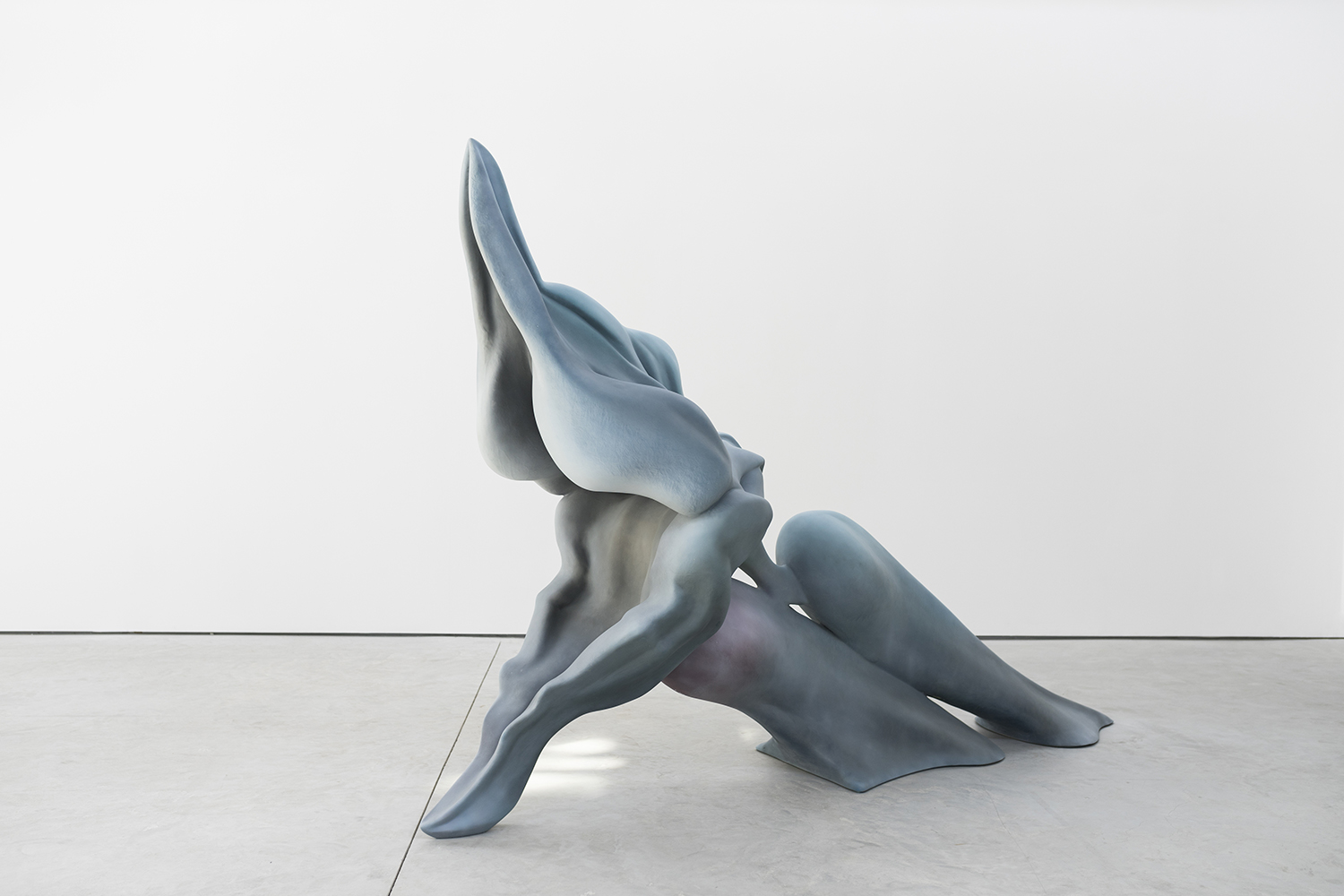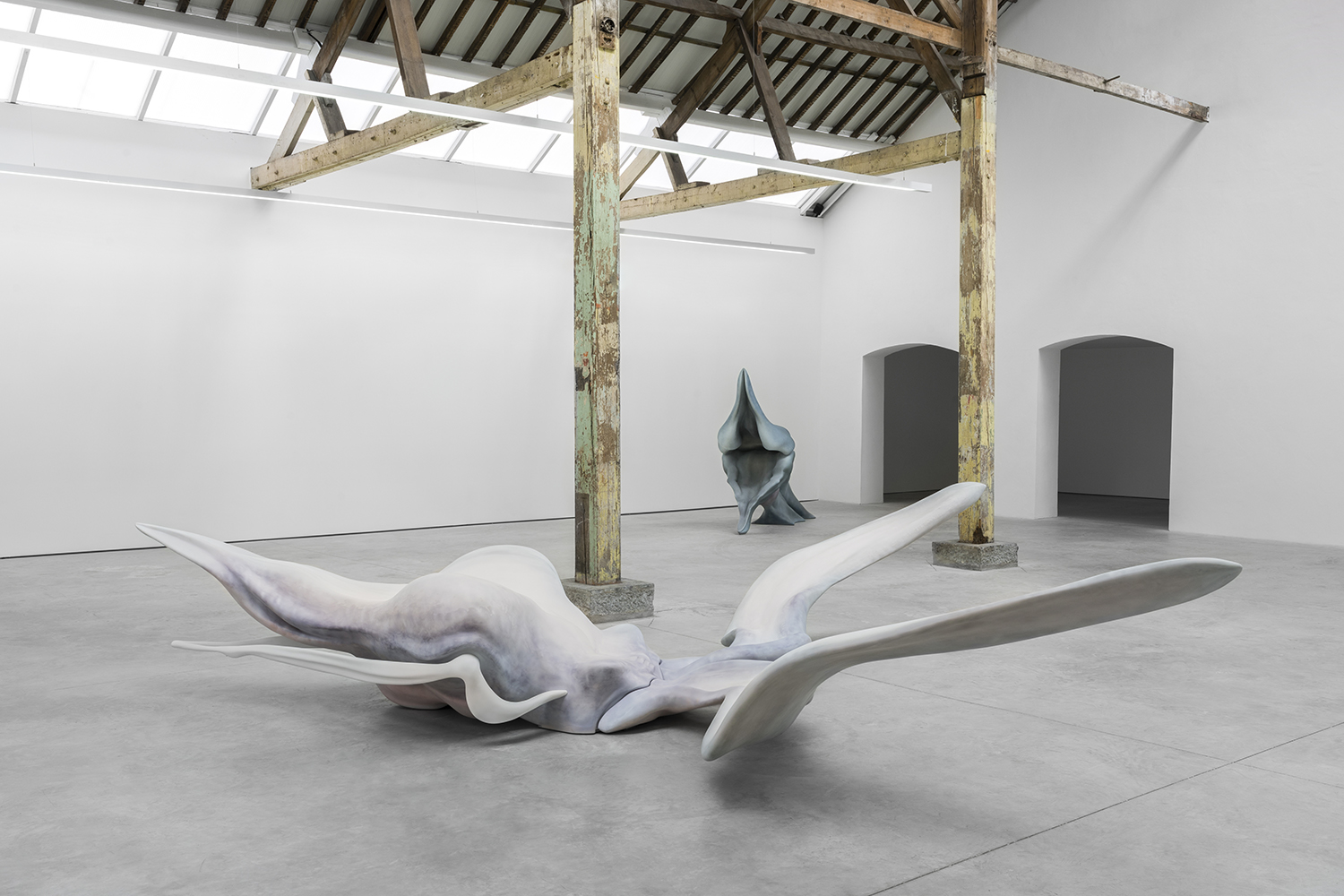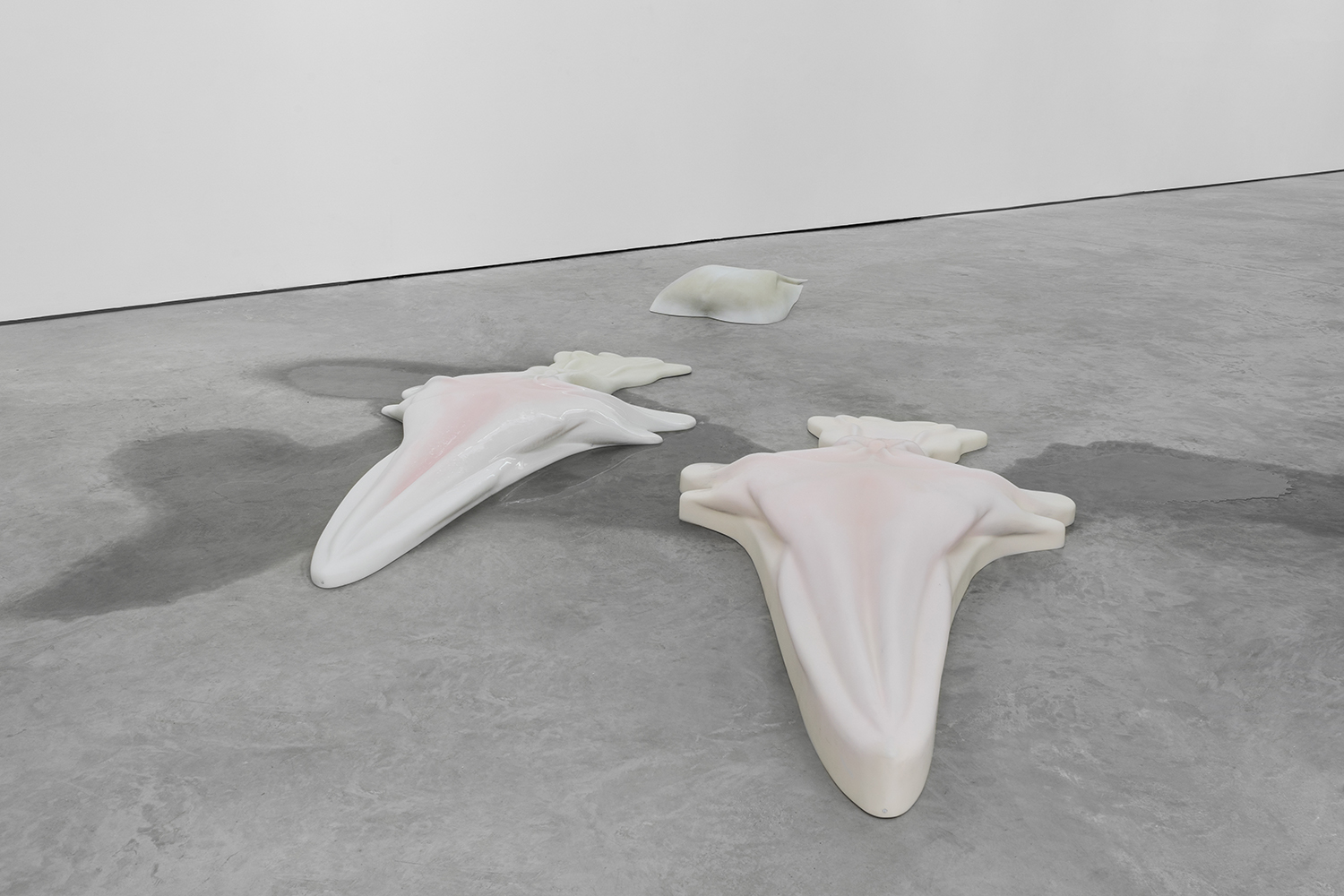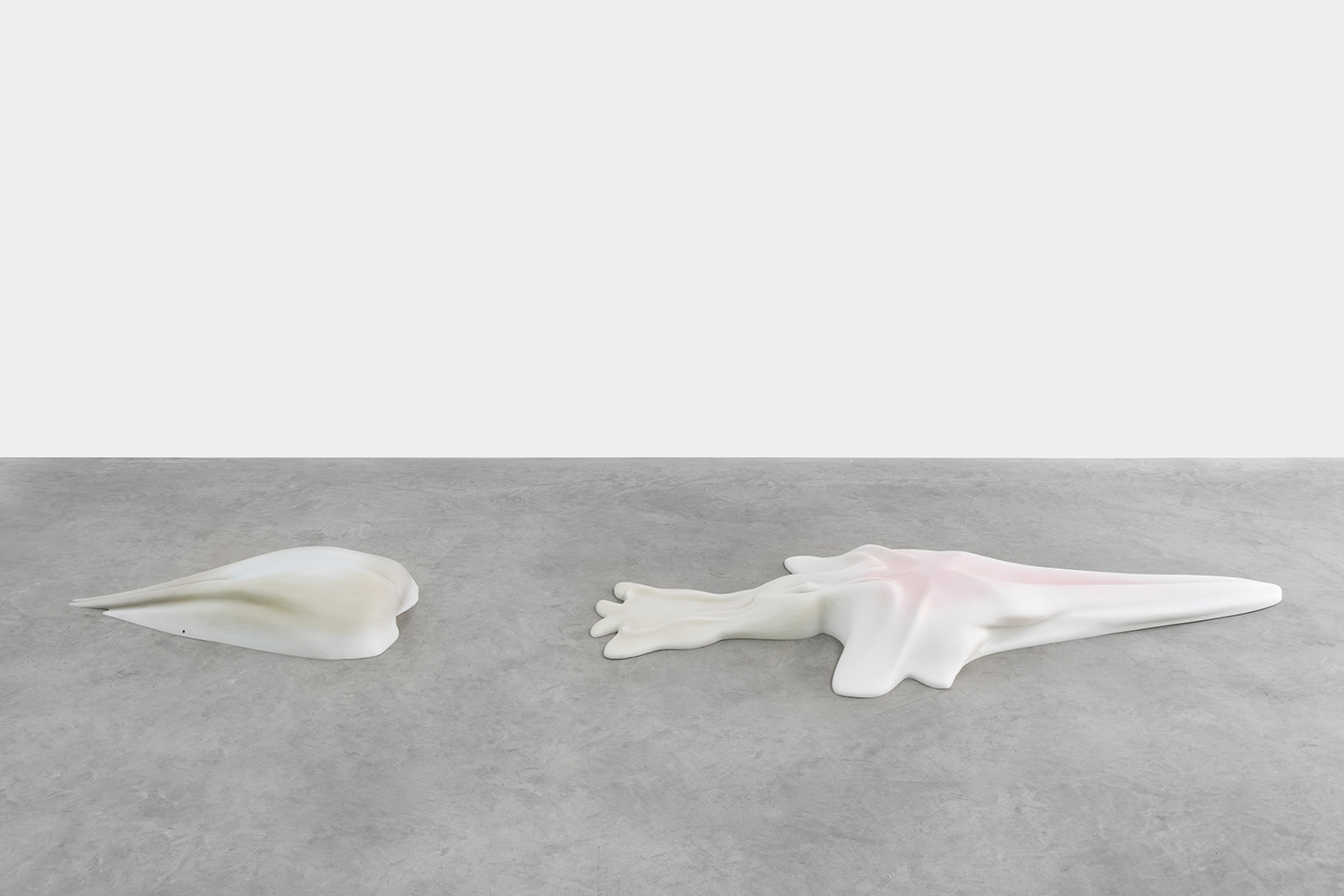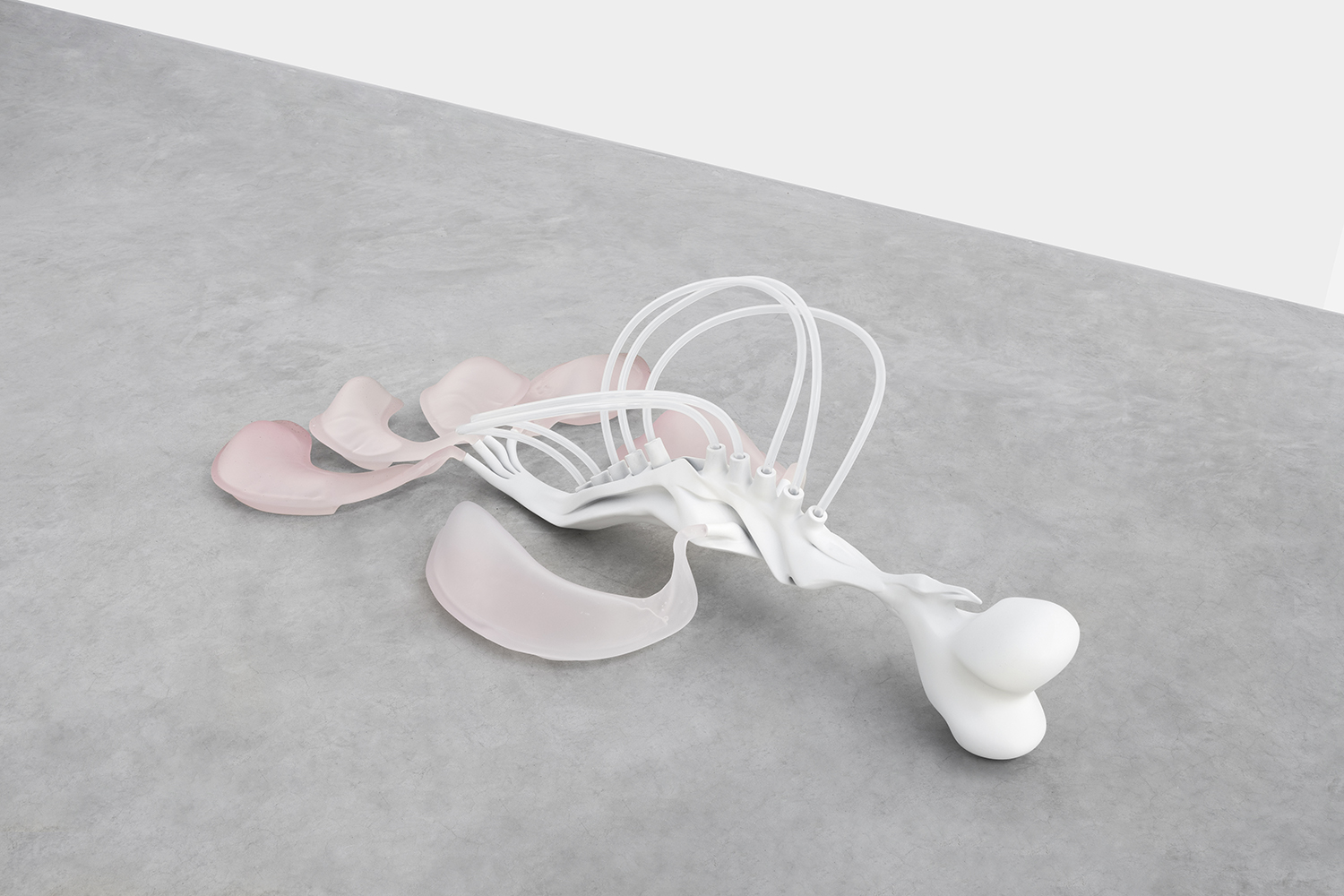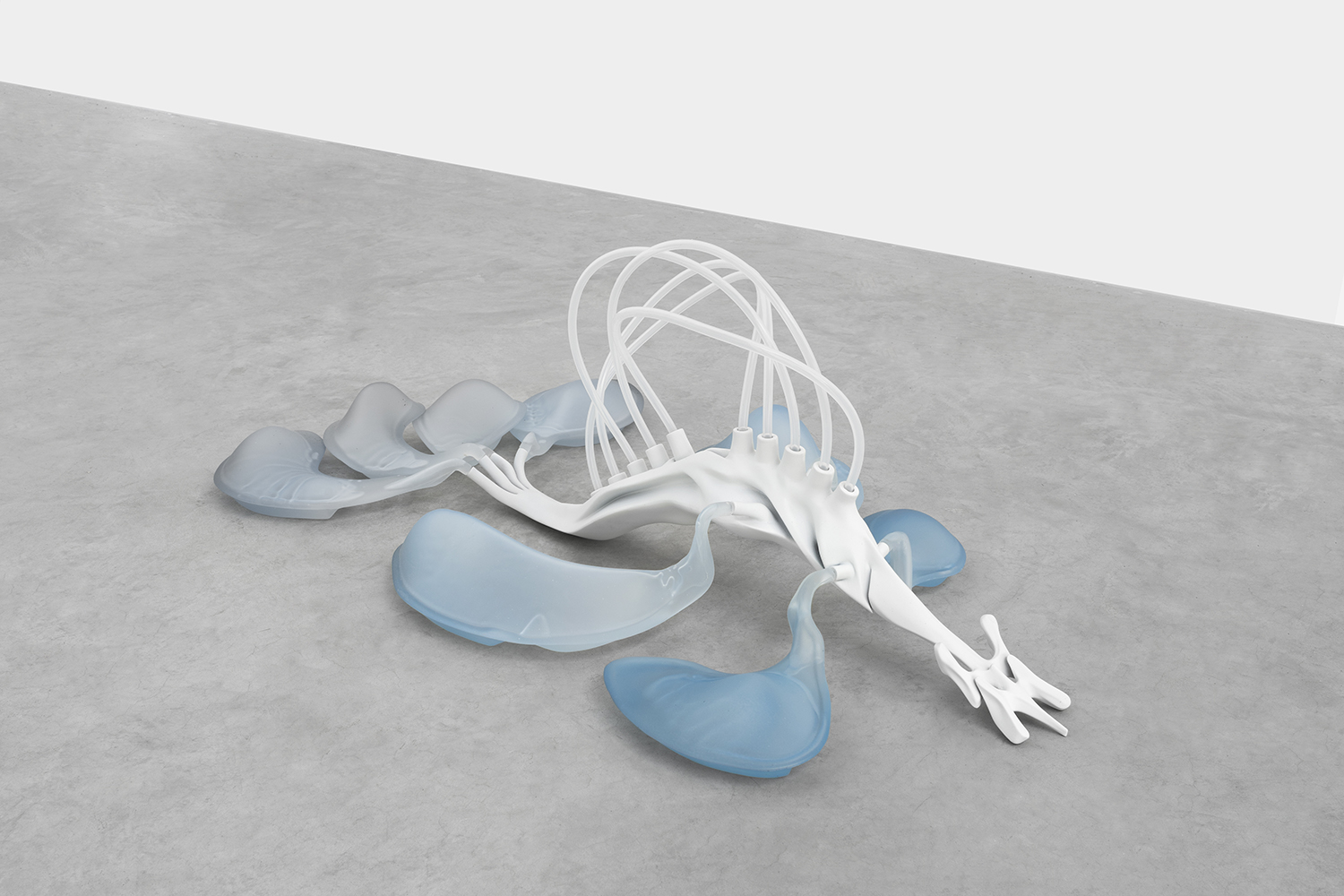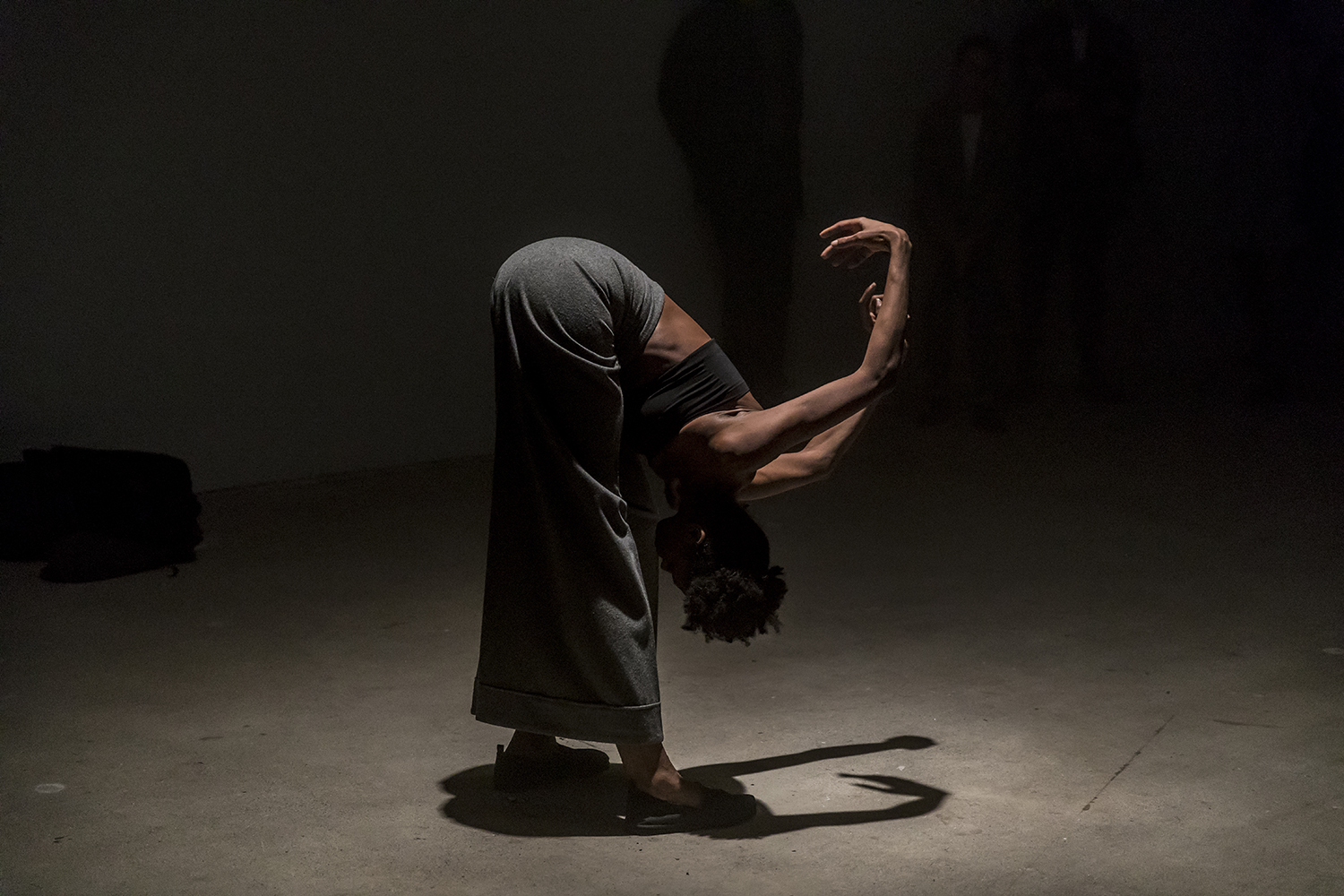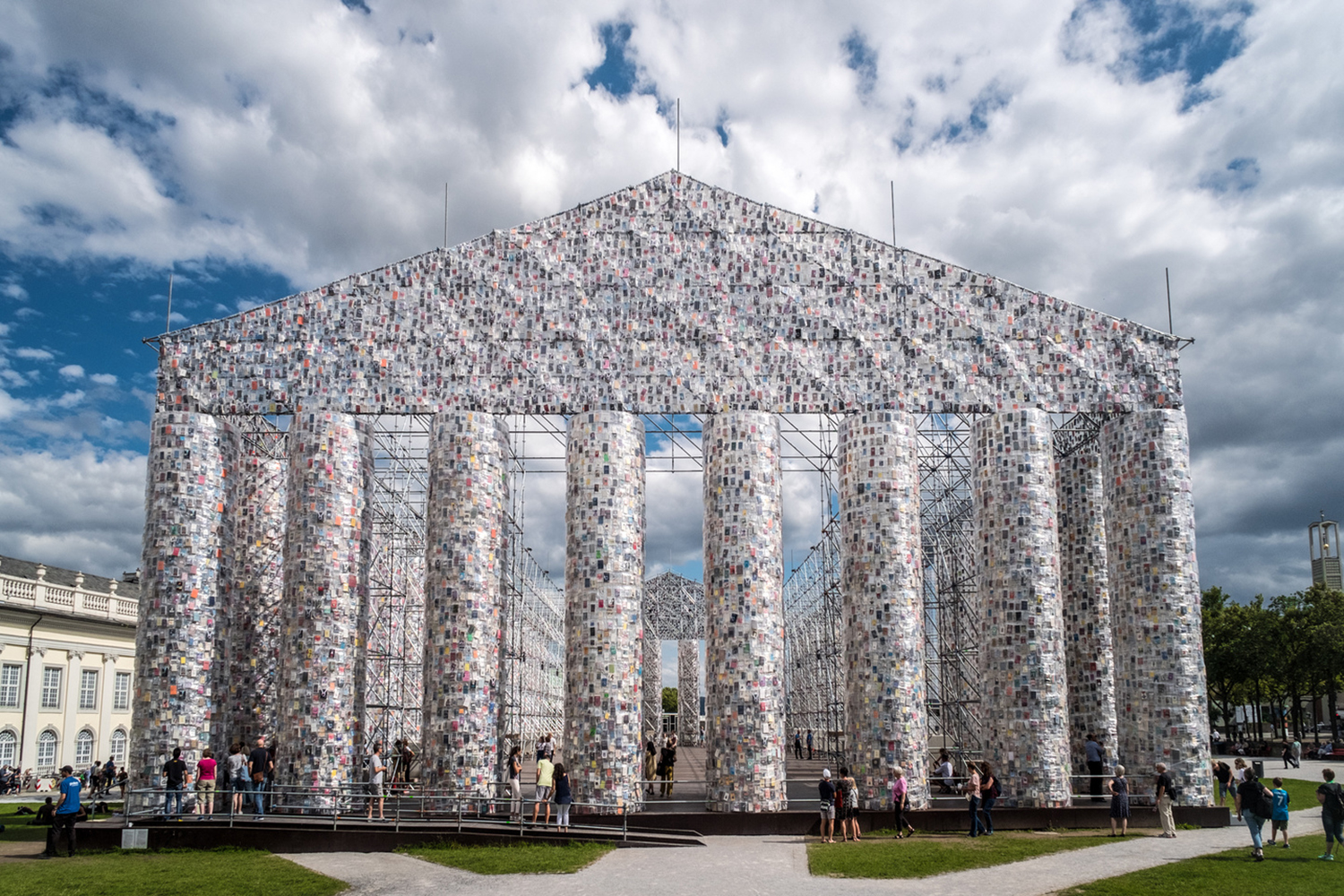Maguerite Humeau’s earlier exhibitions at the Palais de Tokyo and Nottingham Contemporary (2016–17) focused on what allowed the human species to dominate all other species: language. Inspired by Jared Diamond’s book The Third Chimpanzee: The Evolution and Future of the Human Animal (1992), the artist noted that only two percent of our DNA is different from that of chimpanzees. It was the mutation of a single gene, FOXP2, that allowed humans to develop the ability to speak. Working with zoologists, Humeau then invented a story in which another species — elephants — would have benefited from this mutation.
More recently, as part of her exhibition “ECSTASIES” at the Kunstverein in Hamburg (2019), Humeau extended this reflection on the symbiosis between humankind and animals, based on anthropologist Bethe Hagens’s research on the similarity between Paleolithic Venus figures and the shape of certain animals’ brains. At CLEARING Brussels, “MIST” is a continuation of these previous exhibitions: humankind has this time disappeared from a planet it has ravaged, a world “where nonhuman beings have become spiritual, capable of self-transcendence and mystical experience, because they have no other choice.” Without quoting him directly, the artist refers again to Jared Diamond and his book Collapse(2005), about the ecological disaster for which we are responsible. The show features organic forms, marine creatures reduced to respiratory organs “slowly mutating into industrial waste.” But despite their titles — such as The Breather II (A marine mammal performing a breathing ritual at full moon), or The Prayer (A marine mammal invoking higher spirits) (all works 2019) — the works seem trapped in their formal dimension, and fail to convey a sense of spirituality, urgency, or decline. Trained as a designer at the Royal College of Art, Humeau has produced perfect shapes, but they are more like monuments to the living beings she evokes in her story, rather than the representation of these beings. And it is somewhat paradoxical to have created these sculptures, which are supposed to lead us to reflect on the decline of ecosystems, with materials such as polystyrene, polyurethane resin, and fiberglass. The large High Tide drawing, which describes the cosmogony of the universe created by the artist, nevertheless reflects the complex and original way in which she deals with a current and distressing theme. But it would undoubtedly be to her advantage to do so with a less technological approach.

